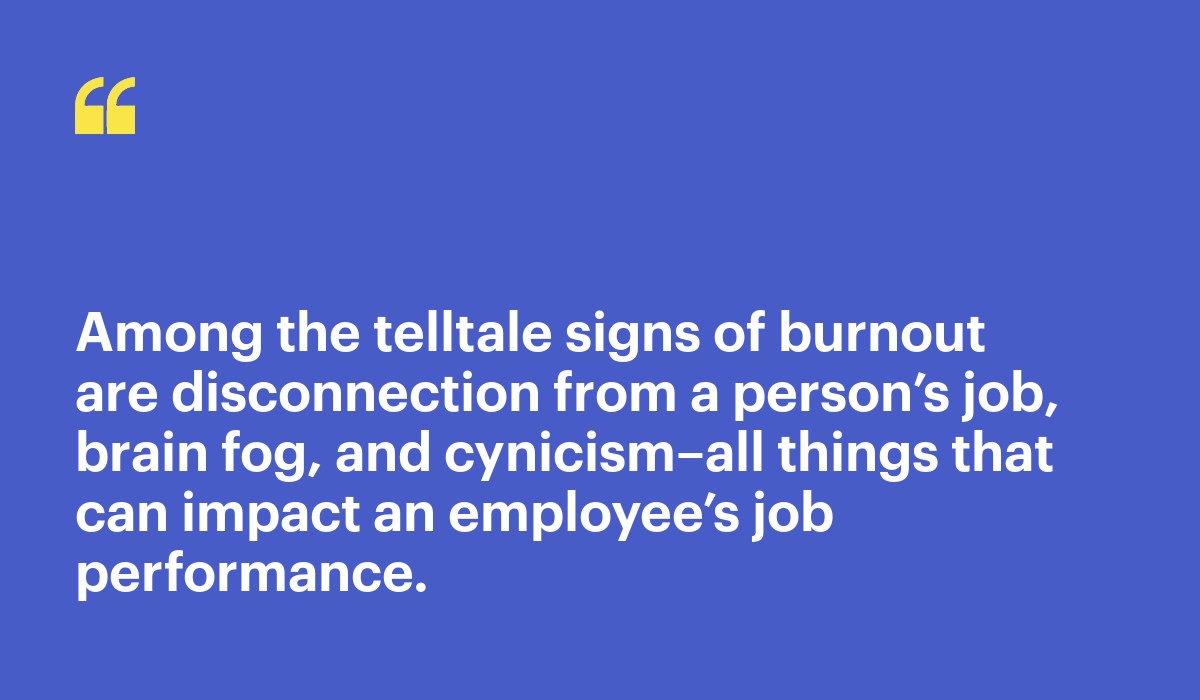The Right to Disconnect: New Laws Combat Burnout
Officials in Europe and Canada are introducing right-to-disconnect laws to protect people from burnout. Should your organization develop its own policy?

Those high-pitched pings and beeps from a stressed out manager can be hard to ignore, even after the workday is officially over.
This kind of 24/7 availability has become a reality for many employees—and officials in Europe are pushing back. Governments in Belgium, Ireland, and Portugal all recently announced new right-to-disconnect rules that protect an employee’s right to be free from work at the end of the day.
The legislative trend is also emerging in North America: In October 2021, Ontario became the first province in Canada to announce that it will introduce such a law. However, many experts say this kind of legislation will not likely be introduced across the US any time soon.
Even so, employers who are not affected by these new laws still need to pay attention and act. Clear organizational policies are needed to put healthy life/work boundaries back in place, stop the rising tide of overwork, and help address the employee burnout epidemic.
Blurred lines between home and work
It can be easy to point the finger at the pandemic, but this blurred home/work boundary likely has its roots in the digital transformation that took place nearly 15 years ago. When smartphones, laptops, and ubiquitous Internet access hit the scene, there was more flexibility for workers, but it also meant people could be reachable by their managers and colleagues at all times, whether they were in or out of the office. (Volkswagen recognized this problem early, and banned after-hours work emails back in 2011).
When the health crisis struck, a huge proportion of managers went from leading teams in person to remote literally overnight. It was a big shift everywhere. Even global tech companies that had some work from home prior to the pandemic struggled to adjust their working models. For many people, the boundary between personal and work time that had been gradually ebbing away disappeared entirely.
The dangers of “always on” work cultures
Now, it’s harder than ever to find that critical mental “off” switch. This is a problem—for people and their employers. The human brain needs rest, and psychological detachment from work (a term to describe mentally switching off from work during leisure time) is necessary for replenishing energy reserves.
Some researchers emphasize that how people actually feel about work matters too, and positive thinking about work at home can actually make an employee feel better. While the evidence here is compelling, it still underscores the need to nix work communications at the end of the day. How many managers send an email at 9 p.m. to lavish praise? After-hours communications are more likely to be about things that are urgent and stressful.
The positive work emotions study also points to another fact: We have become our work. And when our work and our identities become meshed together, it can be hard to maintain a healthy perspective when work-related challenges inevitably crop up.
There’s also the issue of sheer work volume to consider. A study released in February 2021 by Virtual network provider NordVPN Teams, which looked at data sent across servers after traditional working hours, found that remote workers in several countries were working an average of 2.5 additional hours per day. This was a particular problem in the UK and the Netherlands, where employees would regularly log off as late as 8 p.m.

Read Visier’s 2021 burnout report to learn more.
The burnout epidemic
The impact is significant. Visier’s survey of 1,000 full-time employees across the U.S. found that the vast majority (89%) of employees experienced burnout in the year leading up to the summer of 2021. According to the survey, the number one contributing factor to burnout was an increase in workload.
Among the telltale signs of burnout are disconnection from a person’s job, brain fog, and cynicism–all things that can impact an employee’s job performance. Burnout can also take a toll on physical health, along with family and professional relationships. In contrast, employee well-being supports productivity, employee engagement, and can position the organization as an employer of choice in a tight labor market.

Clear rules protect employees
Without clear rules and guidelines, employers won’t be able to swiftly bring after-hours work communications down to a tolerable level. Wide scale behavior change is just too slow.
Consider the issue of female representation in leadership roles. A few leaders have always questioned whether we really need to set goals and create rules around gender diversity. The misguided argument by inclusion-averse individuals goes this way: if women are capable enough, wouldn’t they be in a leadership position anyway? But organizations that approach gender equity by design are in a better position to reach their diversity goals within a set timeframe.
Even if the majority of managers have a genuine desire to protect their employees’ wellbeing, there will always be a few managers who feel that everything is an emergency. So the right to disconnect merits a workplace policy–one that can be tracked and measured with tools such as employee engagement surveys.
But what about workplace flexibility?
One caveat, however, is that the policy must be approached with common sense to maintain the overarching goal of supporting employee well-being. Consider how, for a parent, sometimes 9 p.m. is the only point in their day when they can grab some focused work time and regain a sense of control, particularly during the disruption of a pandemic.
Disproportionately, it is women who need this flexibility, as they are more likely to be shouldering the burdens of household and childcare duties on top of work. Much public attention has been (rightfully) paid to this problem, but there are also unique societal pressures affecting men to consider. As the author of this New York Times opinion piece points out, men are still expected to live up to the traditional role of family breadwinner. This pressure can lead to overwork that impacts men’s well-being and strains family relationships.
A well-designed right-to-disconnect policy, then, strikes the right balance between promoting employee flexibility and minimizing the risk of overwork. This can be addressed, in part, by pulsing employees through surveys about what kind of boundaries work best. This is also why focusing on work communications–and not when the employee chooses to work–is key. It’s hard to stop people from writing reports at 9 p.m., but reducing after-hours communications will certainly go a long way towards reducing working time overall.
The benefits of disentangling work from life
Life has become all work and no play–and this harms employees, teams, and organizations. It’s time to set clear expectations about when people really need to respond to all those pings and beeps from their managers and coworkers.
Yes, organizations can encourage people to voluntarily engage in things like mindfulness training at the end of the day to mentally switch off. But employers have a role to play in promoting consistency through policies and guidelines. This way, by helping employees carve out more time for fun and relaxation, organizations can help people breathe more life into their work.


